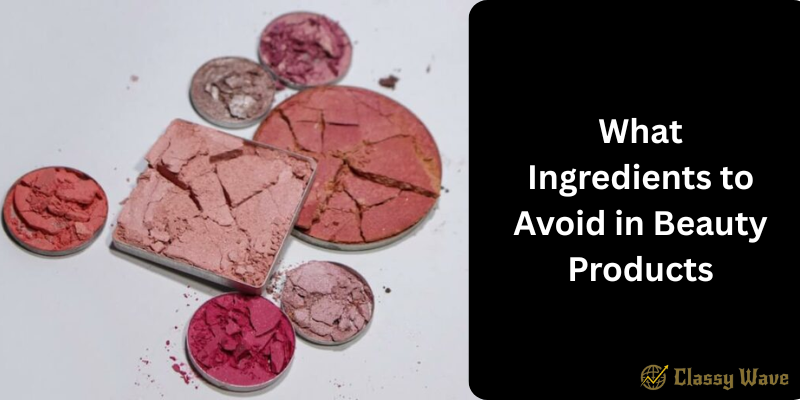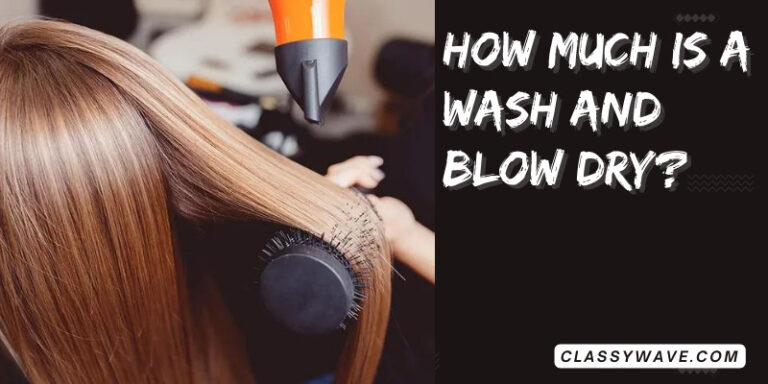What Ingredients to Avoid in Beauty Products
When it comes to skincare and cosmetics, what you apply on your skin is just as important as what you eat. Many beauty products on the market contain harmful chemicals that can irritate your skin, cause allergic reactions, or even affect your hormones in the long run. Understanding which ingredients to avoid helps you make smarter, safer choices for your skin and overall health.
Let’s explore some of the most common toxic ingredients found in beauty products and why you should steer clear of them.
1. Parabens
Parabens are widely used as preservatives in cosmetics to prevent bacterial growth. You’ll often find them listed as methylparaben, ethylparaben, or butylparaben.
Why to avoid: They can mimic estrogen in the body, potentially disrupting hormones and increasing the risk of breast cancer.
Tip: Look for “paraben-free” labels when buying skincare or makeup products.
2. Sulfates (SLS and SLES)
Sodium Lauryl Sulfate (SLS) and Sodium Laureth Sulfate (SLES) are foaming agents used in cleansers, shampoos, and body washes.
Why to avoid: They strip away natural oils, leading to dryness, irritation, and even eczema.
Safer alternative: Choose sulfate-free cleansers with natural surfactants like coco-glucoside or decyl glucoside.
3. Phthalates
Phthalates are used to make fragrances last longer and improve texture in cosmetics. They’re often hidden under the ingredient “fragrance” or “perfume.”
Why to avoid: These chemicals are known endocrine disruptors and may affect fertility and fetal development.
Tip: Always opt for “phthalate-free” or “fragrance-free” products.
4. Formaldehyde and Formaldehyde-Releasing Agents
These chemicals act as preservatives in nail polish, hair straighteners, and eyelash glue.
Why to avoid: Formaldehyde is a known carcinogen that can cause allergic reactions, headaches, and respiratory issues.
Look out for names like: DMDM hydantoin, quaternium-15, or imidazolidinyl urea — they slowly release formaldehyde over time.
5. Artificial Fragrances
That pleasant floral or fruity scent may not be as innocent as it smells. Synthetic fragrances can contain hundreds of unlisted chemicals.
Why to avoid: They can trigger migraines, asthma, and skin irritation, especially for sensitive users.
Tip: Choose products labeled “unscented” or made with natural essential oils.
6. Mineral Oil and Petrolatum
These ingredients come from petroleum and are used to lock in moisture.
Why to avoid: They can clog pores, trap dirt, and prevent your skin from breathing. Prolonged use can lead to acne and dull-looking skin.
Safer alternative: Look for plant-based oils like jojoba, argan, or coconut oil.
7. Oxybenzone and Octinoxate
Commonly found in chemical sunscreens, these ingredients help absorb UV rays.
Why to avoid: They can cause skin allergies and are known hormone disruptors. They also harm coral reefs and marine life when washed into the ocean.
Tip: Choose mineral sunscreens with zinc oxide or titanium dioxide instead.
8. Triclosan
This antibacterial ingredient is often found in soaps, toothpaste, and deodorants.
Why to avoid: Overuse can lead to antibiotic resistance and disrupt the body’s natural hormone balance.
Safer alternative: Use products with natural antibacterial agents like tea tree oil or eucalyptus.
9. PEGs (Polyethylene Glycols)
PEGs are used as thickeners and moisturizers in creams and lotions.
Why to avoid: They can be contaminated with harmful impurities like ethylene oxide and 1,4-dioxane, which are potential carcinogens.
Tip: Look for “PEG-free” skincare options with natural moisturizing ingredients like aloe vera or shea butter.
10. Toluene
Toluene is a solvent found in nail polish, hair dyes, and some fragrances.
Why to avoid: It can cause dizziness, nausea, and long-term nervous system damage when inhaled frequently.
Safer alternative: Choose nail polishes labeled “3-free” or “5-free,” meaning they don’t contain toluene, formaldehyde, or DBP.
11. Silicones
Silicones create a smooth texture in primers and hair conditioners.
Why to avoid: They form a barrier on the skin and hair that can trap bacteria and prevent proper moisture balance.
Tip: Look for “silicone-free” or “water-based” beauty formulas.
12. Alcohol (Denatured Alcohol or SD Alcohol)
Certain types of alcohols are added to help products dry quickly or penetrate the skin.
Why to avoid: They can dehydrate your skin, leading to irritation and premature aging.
Safer alternative: Opt for products with fatty alcohols like cetyl or stearyl alcohol, which are skin-friendly.
13. Talc
Used in powders, blushes, and eyeshadows, talc helps absorb moisture and prevent caking.
Why to avoid: Some talc may contain asbestos fibers, which are carcinogenic.
Tip: Choose talc-free makeup or use natural alternatives like rice powder or cornstarch.
14. Synthetic Dyes
These give beauty products their bright colors.
Why to avoid: Synthetic dyes, especially those labeled FD&C or D&C, can cause allergic reactions and may be contaminated with heavy metals.
Safer alternative: Look for natural colorants made from fruit extracts, beetroot, or turmeric.
15. Aluminum Compounds
Found in antiperspirants and some cosmetics, aluminum blocks sweat glands to reduce perspiration.
Why to avoid: Research suggests it may be linked to hormonal disruptions and Alzheimer’s disease.
Tip: Choose natural deodorants made with baking soda, arrowroot powder, or magnesium.
Conclusion
Beauty should never come at the cost of your health. By learning what ingredients to avoid in beauty products, you’re taking a big step toward cleaner, safer self-care. Always read labels carefully, look for certified organic or toxin-free brands, and choose products that are kind to both your skin and the environment.
Remember — the more natural your skincare routine, the more your skin will thank you in the long run.


